2023 Senior Thesis Exhibition: Specters & Relics
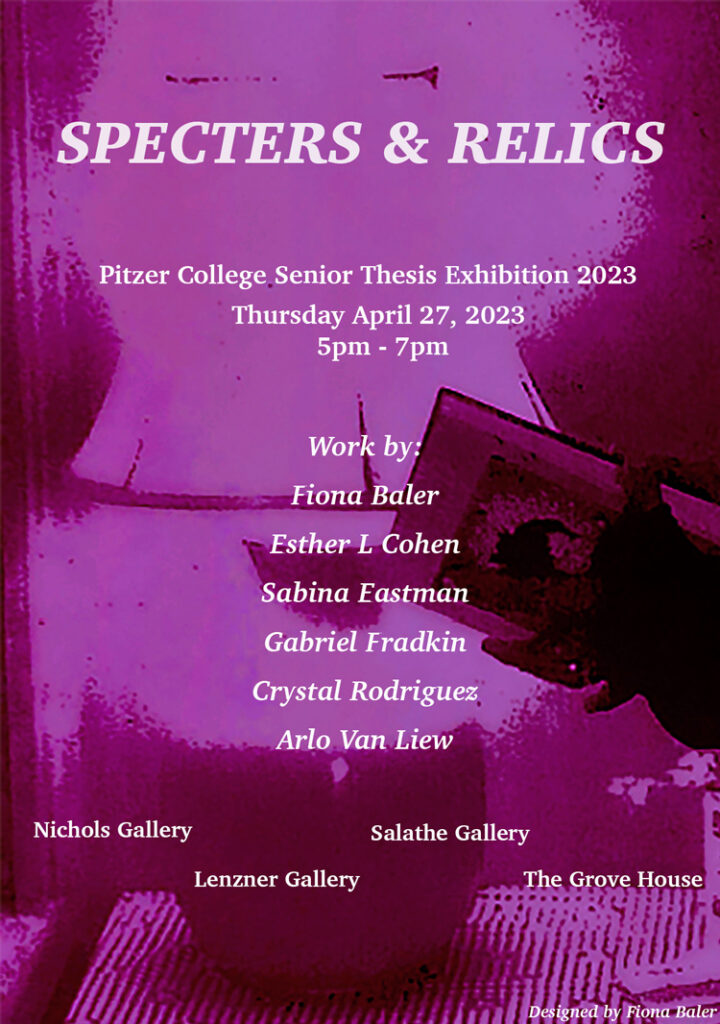
Fiona Baler
Esther L Cohen
Sabina Eastman
Gabriel Fradkin
Crystal Rodriguez
Arlo Van Liew
April 27 – May 13, 2023
Nichols Gallery, Lenzner Family Art Gallery, Hinshaw Gallery, and Salathe Gallery
Fiona Baler
Advancing at Human Speed, a multi-media sculptural installation, explores the act of remembering as time travel. Through multi-media works, Fiona Baler has created a series of space-time portals that blur the lines between the eternal and the fleeting. Fiona creates objects that challenge the boundaries between fullness and emptiness, existence and nonexistence. The layering essential to this glazing technique and the manipulation of negative and positive space suggests a possibility of oscillation between dimensions. These saturated portals allow Fiona to explore memory/time travel as a tangible space to occupy. This work is an exploration of Fiona’s experience of time as non-linear and their desire to further explore time and memory from different points of entry. Advancing at Human Speed offers space for viewers to question, reimagine, or affirm their own perceptions of time. This installation tries to resist the limits of language as a discreet framework to express the fluid experiences of time and memory. This exploration also attempts to promote an understanding of time travel as a way to move through possibilities while resisting temporal and conceptual closure. The central object within this installation, a ceramic time machine, invites the viewer to consider time travel as a quotidian activity. This work interrogates not only how we can travel through memory but how memory can travel through us and how the possibility of time travel offers an opportunity to regain agency through transience.
Advancing at Human Speed, 2023
Inkjet prints on canvas, cotton rope, natural dye, earthenware, inkjet decals, carbon steel
Dimensions variable
Esther L Cohen
Esther L Cohen is a fiber artist utilizing soft sculpture to create a post-human imagination. She believes in the power of collective cultural imagination to influence the direction of human evolution. Esther’s inspiration for the character of a posthuman imagination draws on mythic animalism, biocentrism, and Jewish mysticism.
The theory of Biocentrism teaches that animal consciousness creates what we perceive as reality and animal consciousness creates the universe. While animals construct an inner consciousness, we simultaneously construct an outer reality. This co-creation of the inner and outer world makes the imagination a pivotal piece of shaping collective reality. Esther believes that the posthuman must be constructed in the cultural imagination so that it can be co-created in the outer world, in order for humans to evolve consciously.
Esther invites viewers to imagine a future where wisdom, radical empathy, and a higher form of collective consciousness is relearned from animals. Where a posthuman species will be raised communally without hierarchy and taught cultural knowledge wholly.
Esther uses bright red and orange tones to reference the womb. She depicts a transitional state within the features and appendages of the posthuman creatures, to illustrate a tadpole period in the posthuman evolution. The posthuman creatures who are still developing invite viewers to consider their relation to the life force of the future. Esther wants to inspire viewers to interrogate their positionality with these creatures. Where are we in relation, who do we want to become, how will we get there. Jewish mysticism teaches us that the world is brand new each day, how will we be posthuman tomorrow?
Tadpoles, 2023
Yarn fiber, ceramics
Dimensions variable
Sabina Eastman
Hieronymus Bosch’s The Garden of Earthly Delights (1490-1500) serves as the inspiration for the central artwork and themes of this project. Bosch’s grand altarpiece has been displayed in the Museo del Prado in Madrid, Spain, since 1939. Sabina Eastman first encountered the piece in 2001 and views it as an early model for 20th-century surrealist imagery. The original triptych depicts the creation of both the earthly and heavenly realms as told in Christian theology. The left panel, originally a painted scene of the garden of Eden, has been reimagined as a portrait of the artist herself holding a bitten pomegranate, referencing the debate over the exact specification of the forbidden fruit, as well as the location of Bosch’s work. The figures of Adam, Christ, and God are notably absent. The center panel is a surrealist landscape whose eyes beg questions of viewership and voyeuristic intent, themes prominent in surrealist painting and photography. The right panel is the descent from the earthly realm into hell, as the body and landscape have deteriorated. The etchings that accompany this triptych are studies of details present in the painting.
Bosch’s Garden descends into a hellscape as a result of sin, which permeates the entire work and eventually envelops the figures and their surroundings into a fiery chasm. Eastman’s Garden culminates in a more peaceful death, where her figure still resides, even in the dark and lifeless landscape. The ideas of sin and punishment have no presence in her work, instead, self-realization and reflection take the place of divine creation and destruction.
Creacionisma, 2023
Acrylic, ink, and gold leaf on maple panel
48 x 72 in.
Granada, 2023
Drypoint intaglio etching
10 x 7 in.
Self Portrait, 2023
Drypoint intaglio etching
12 x 8 in.
Fuente de Vida, 2023
Drypoint intaglio etching
11 x 5 in.
La Luna, 2023
Drypoint intaglio etching
12 x 5 in.
Gabriel Fradkin
I was immediately taken by weaving when I was introduced to it this fall. Of every medium I’ve explored I found weaving to offer the most potential in both process and product. Visual and conceptual abundance is something I have always strived for in my work. With weaving, every thread I wove felt like a thought. After a couple of thoughts, I was left with an idea, and with enough ideas, I had a story. I loved the feeling of spontaneous creation that weaving provided me, and every time I took a piece off the loom what I had was an object that, for me, had moved past literal thought, existing only in feeling. The possibility of being able to communicate things that can’t be articulated pushed me further. Now I had the goal of creating a new language, one that, through sensation/haptics, could move past the limits of what can be spoken. I spent the spring creating a story and imagining the world that my weavings belonged to. This installation both tells and is that story. Thank you to the many friends whose care and curiosity in my art made this possible. Finally, this work is dedicated to my roommate’s cat Fairuz (ZuZu), who became both my muse and mentor with our shared love of string.
The Tale of Luno and Mooney, 2023
Yarn fiber, felt, sheets
Dimensions variable
Crystal Rodriguez
We have been presented with the following dilemma: Live as we have and lose everything or make some sort of change. What if we could dream up a future outside of the systems that have destroyed the planet and created deep divisions among the people. Can we quiet ourselves enough to see new ways of being? Can we use our ancestral ways of knowing to forge new/old paths?
In this installation, Reworlding: Dreams and Questions, Crystal Rodriguez is exploring themes around community building and interdependence. She has been imagining and reimagining possibilities for the future and is working to build it in the present. Her practice is deeply rooted in love. She is creating images and spaces for softness and joy while reckoning with difficult histories in both the personal and the collective. Often embodying childlike wonder and using an experimental hand, the physical manifestation of Rodriguez’s practice is made up of sculpture, painting, printmaking, collage, and assemblage. Using digital and analogue mediums she is working to hold space for dreaming and reworlding.
With a deep understanding that no person does anything wholly alone, Crystal Rodriguez would like to hold the following people in deep gratitude.
For starters, the work she is doing would not and could not exist without the labor of these people: bell hooks, Adrienne Maree Brown, Tricia Hersey and Kazu Haga. Their words have shaped this body of work. Rodriguez also thanks Barbara Junisbai, Scarlett Duarte, The CASA Pitzer program, Roxane Williams and everyone at Prototypes Women’s Center, Annie Nunez, Arlo Van Liew, Jack Contreras, The Pitzer College Art Field Group and Hardy Richardson.
Special Thanks to Maureen and Roland Leal for their material contributions to this project.
Because Crystal Rodriguez is a mother, wife, and student, none of this would be possible without ample support in childcare, domestic labor and extensive encouragement.
Lynn Smoot Thiel, Bill Thiel, thank you for your support in childcare. This would not have been possible without your willingness to care for the children.
Skye and Sterling Leal, thank you for your patience, love and encouragement.
Justin Leal, thanks and appreciations will never be enough. Thank you for being my partner in life. Thank you for believing in me sometimes before I believe in myself. Thank you, most importantly, for dreaming with me.
All Are One, 2023
Risograph print
101 x 189 in.
Collective Investment, 2023
Mirror, wood, glass, acrylic, glitter, found object
51 x 54 x 27 in., and three 24 in. diameter disks
Assorted Posters, 2023
Ink jet prints
Dimensions variable
Assorted Daydreams, 2023
Ink jet prints on cardstock
Dimensions variable
Collective Networks, 2023
Risograph and metal transfer paper prints
Dimensions variable
Untitled, 2023
Single channel stop motion video of various print media
1:10 min.
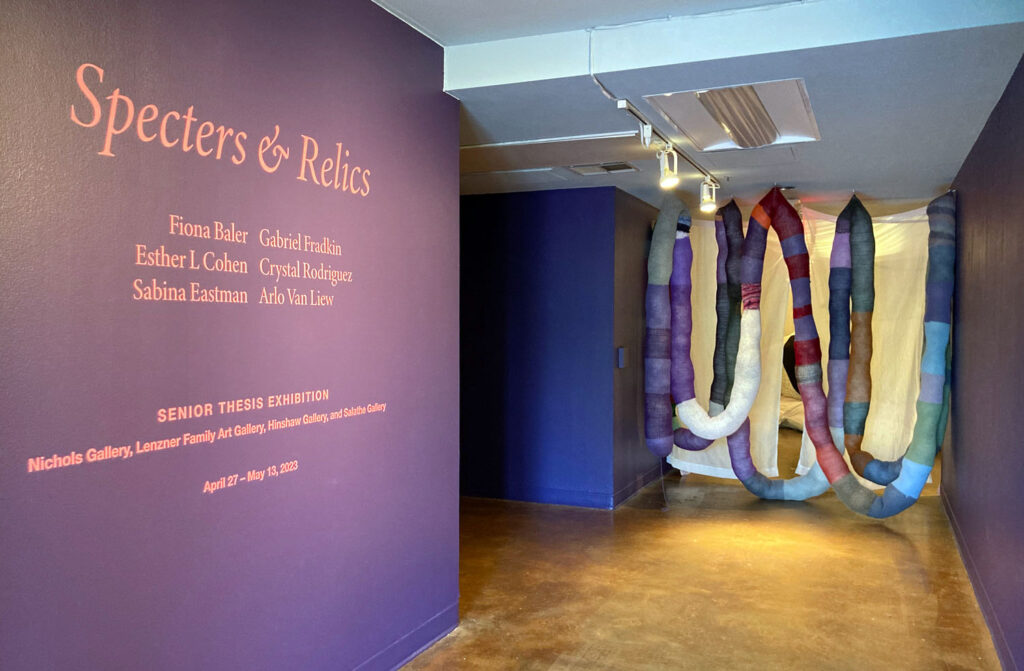
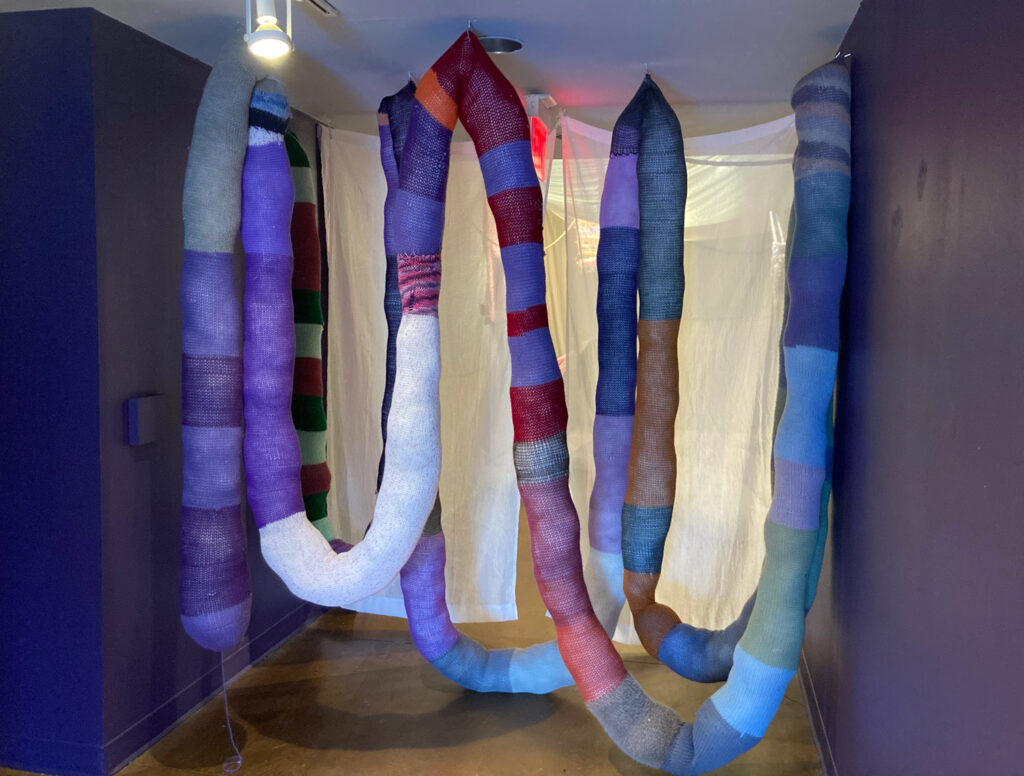
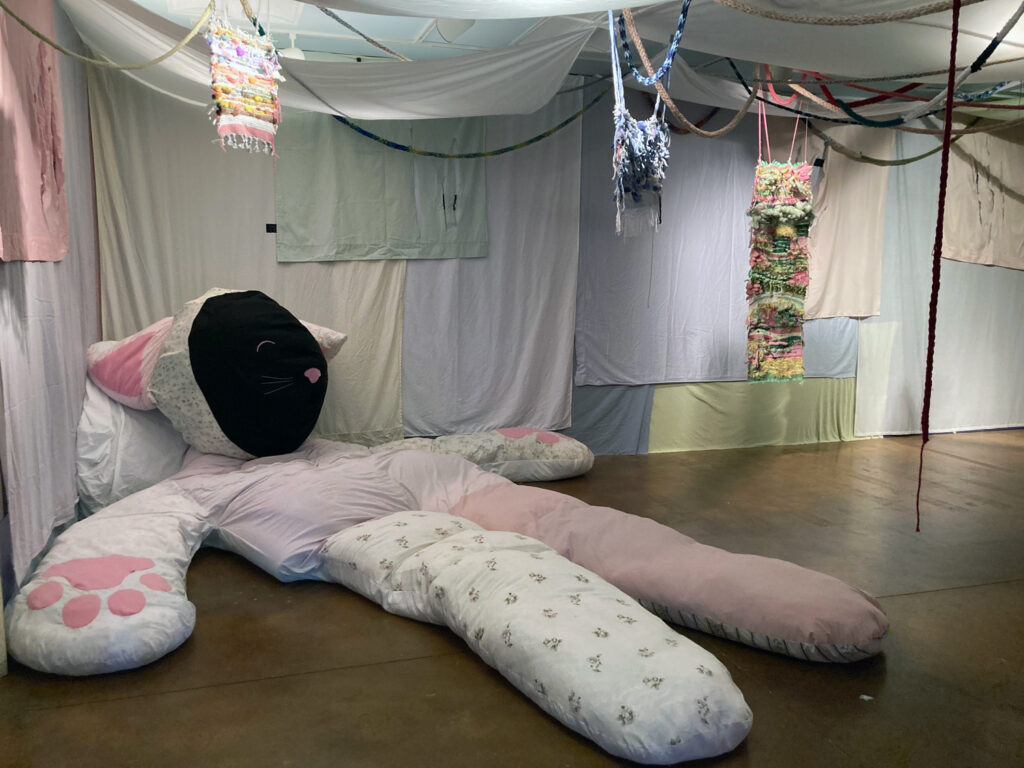
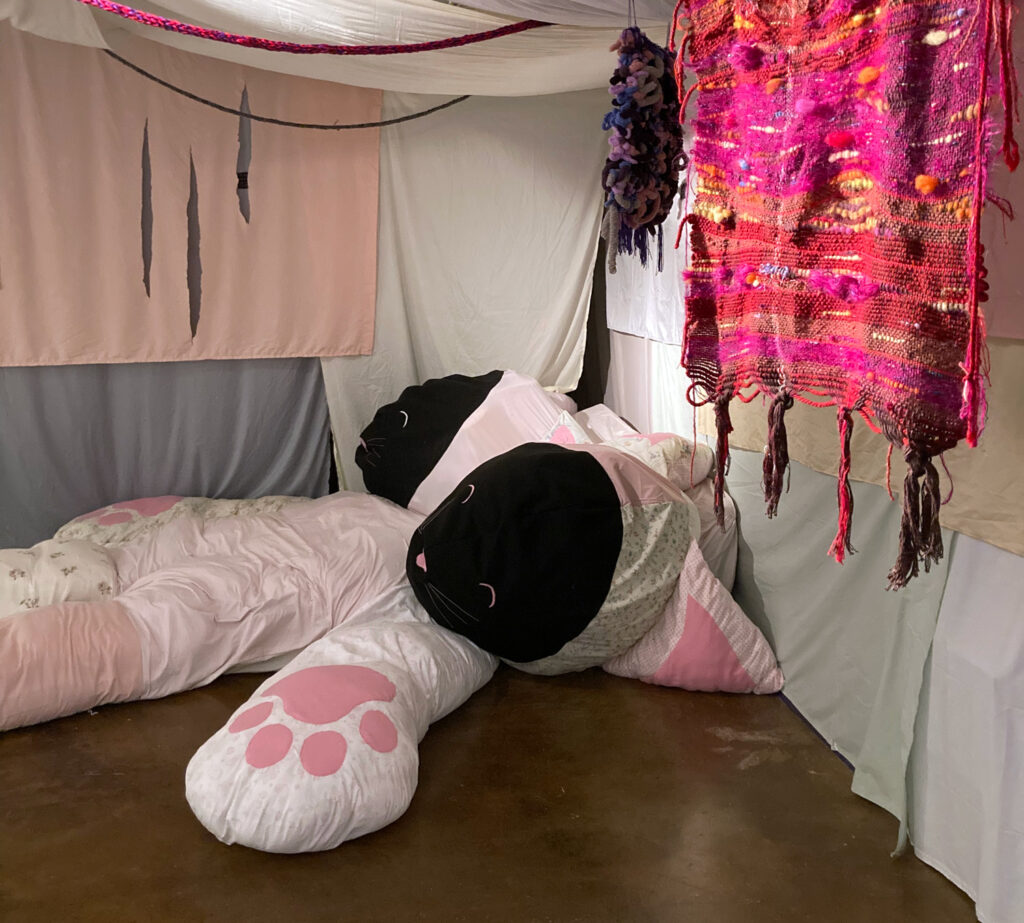
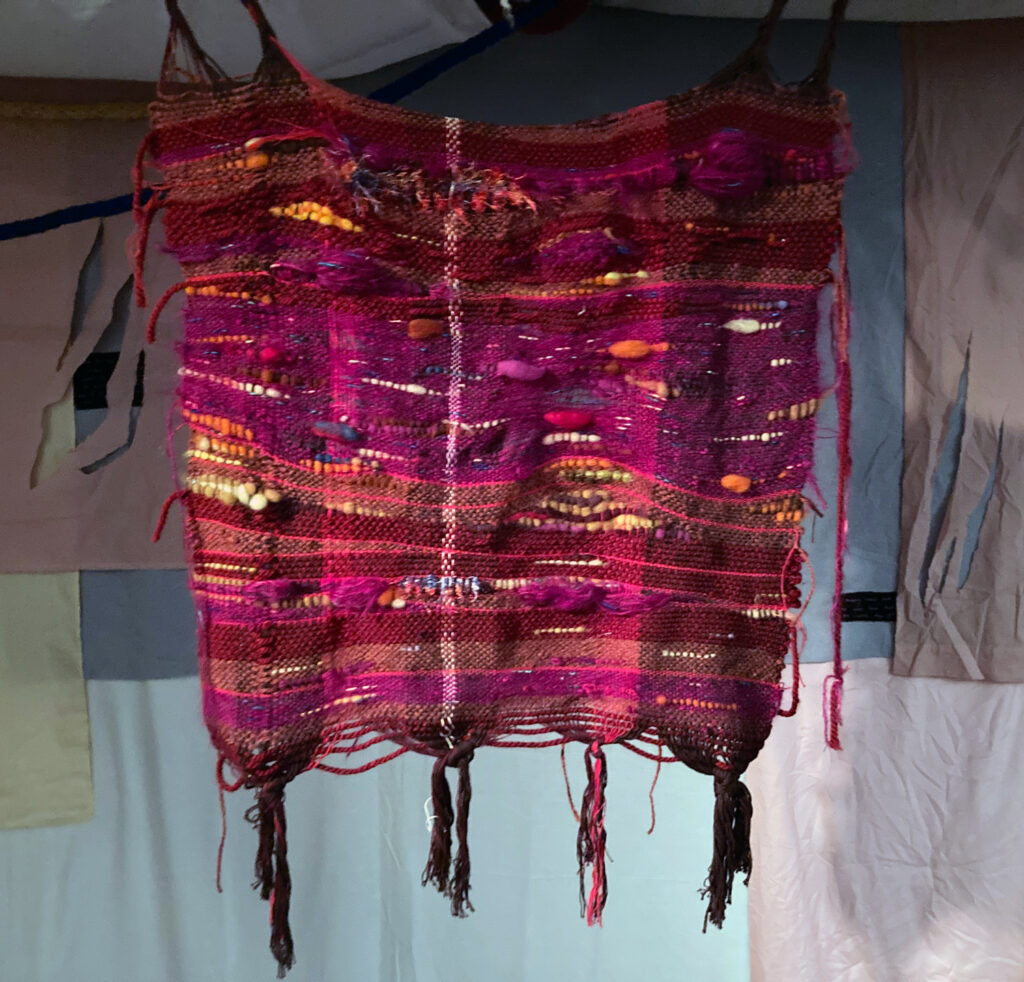
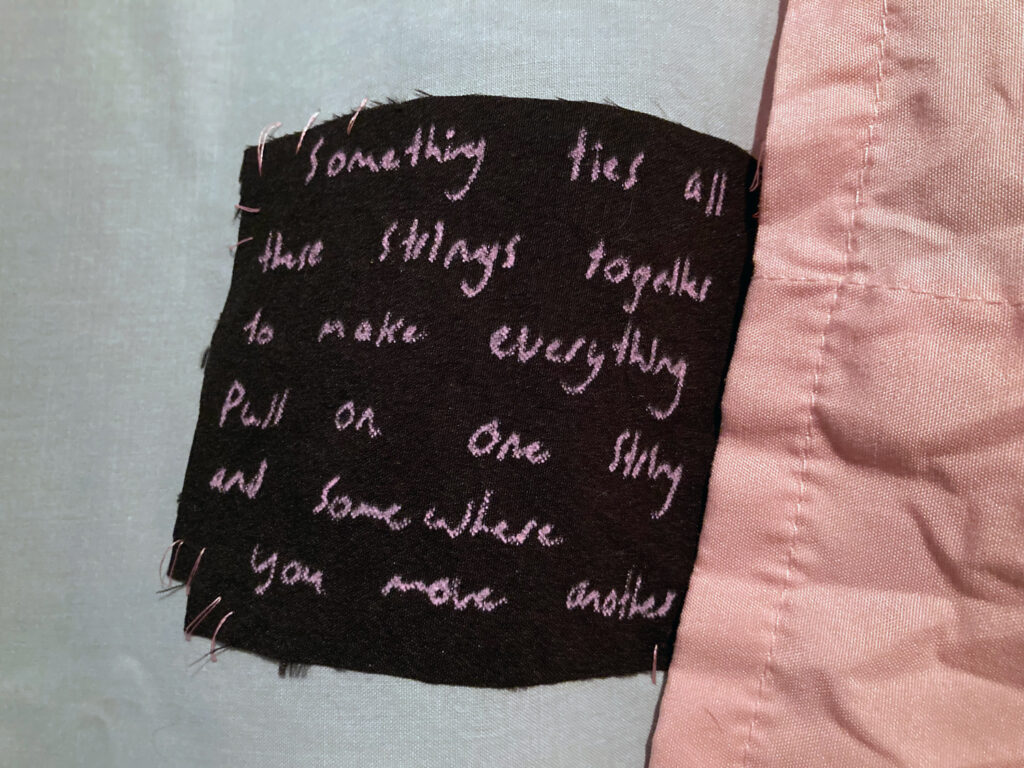
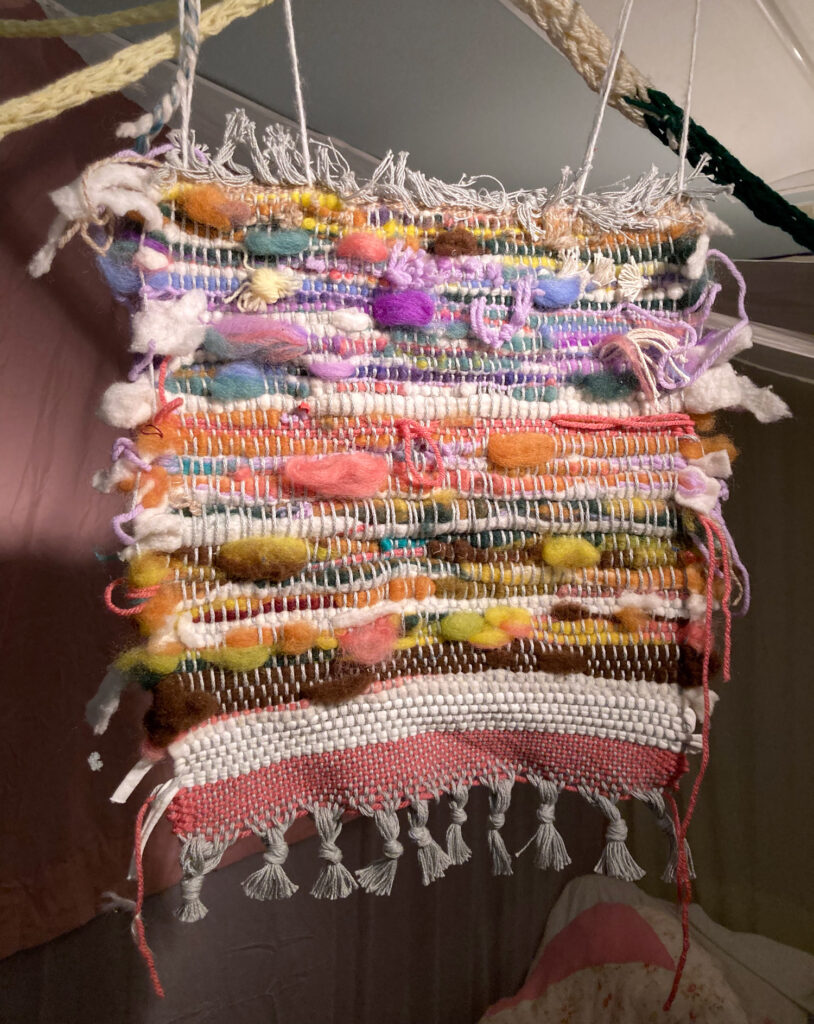
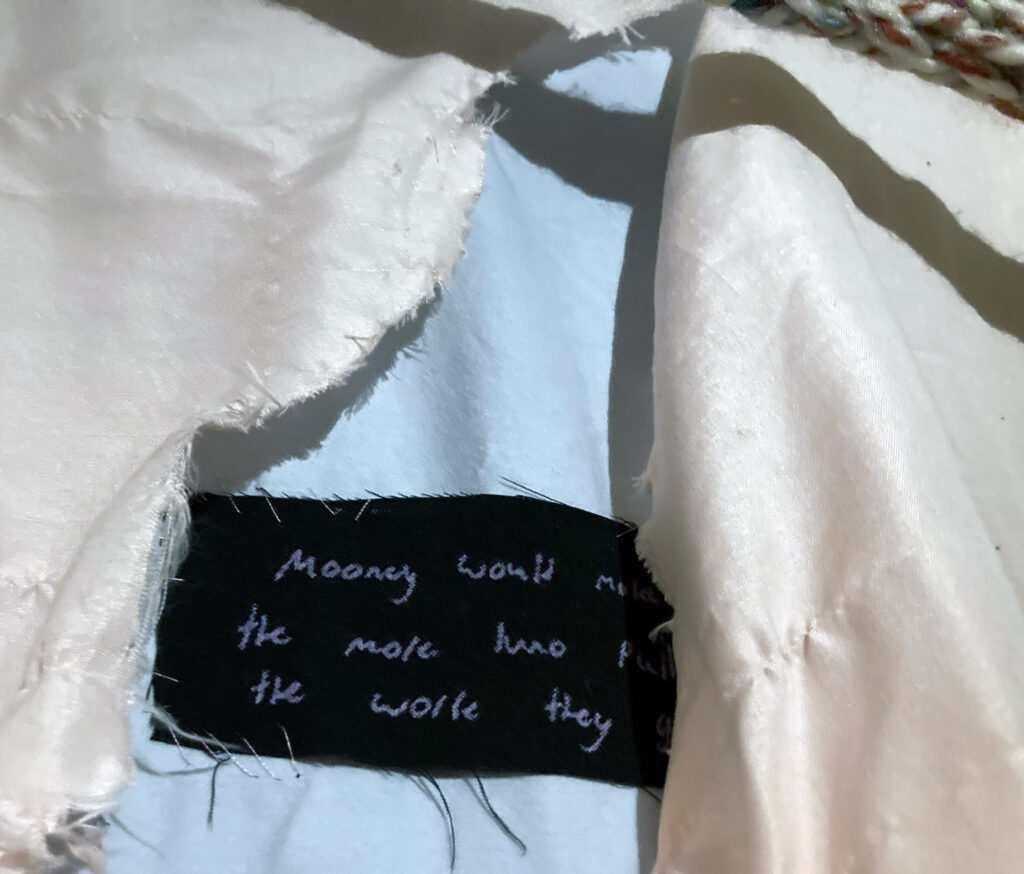
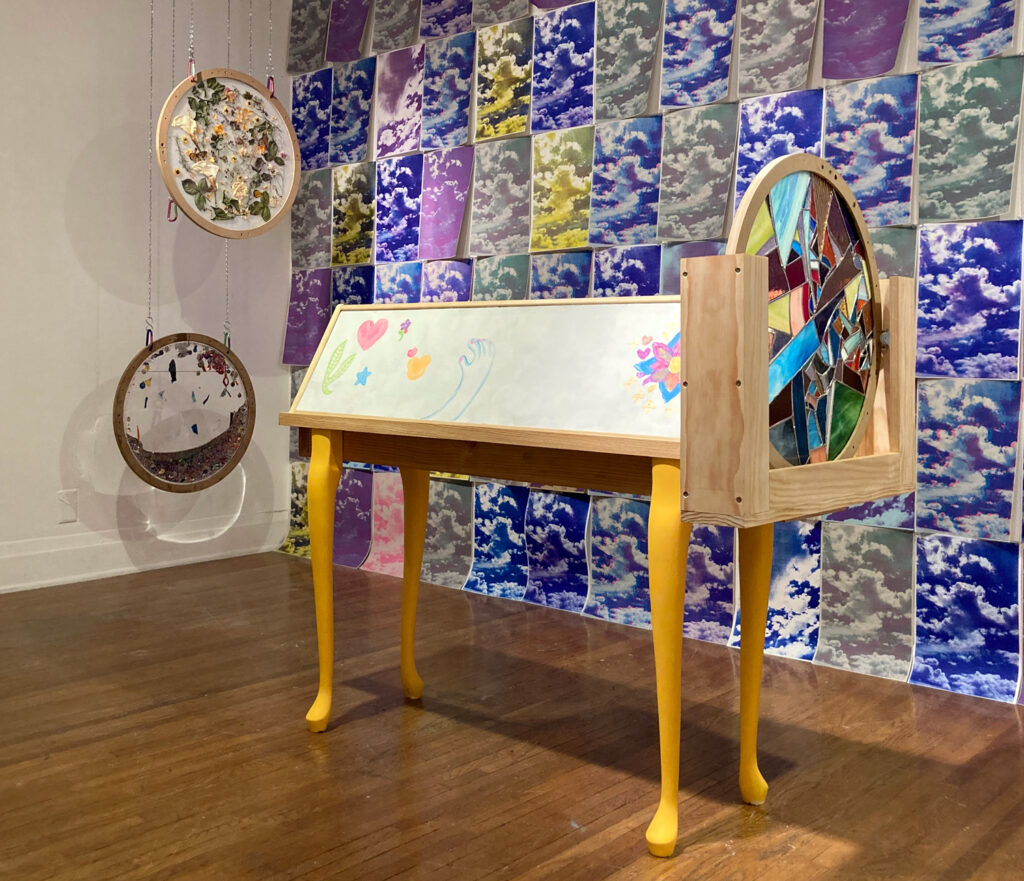
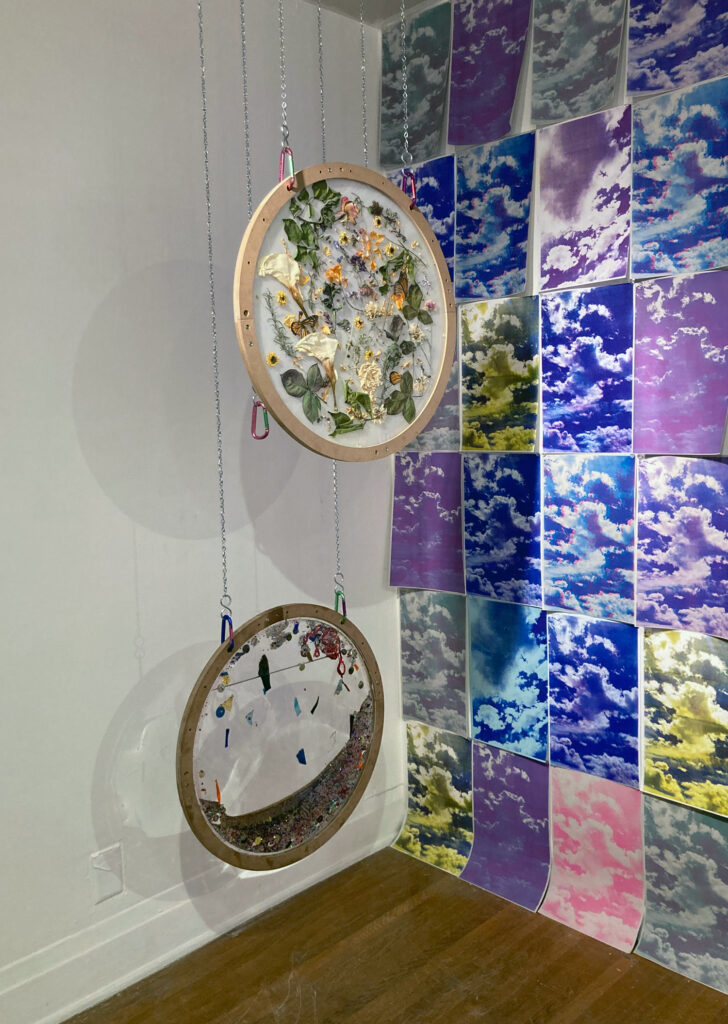
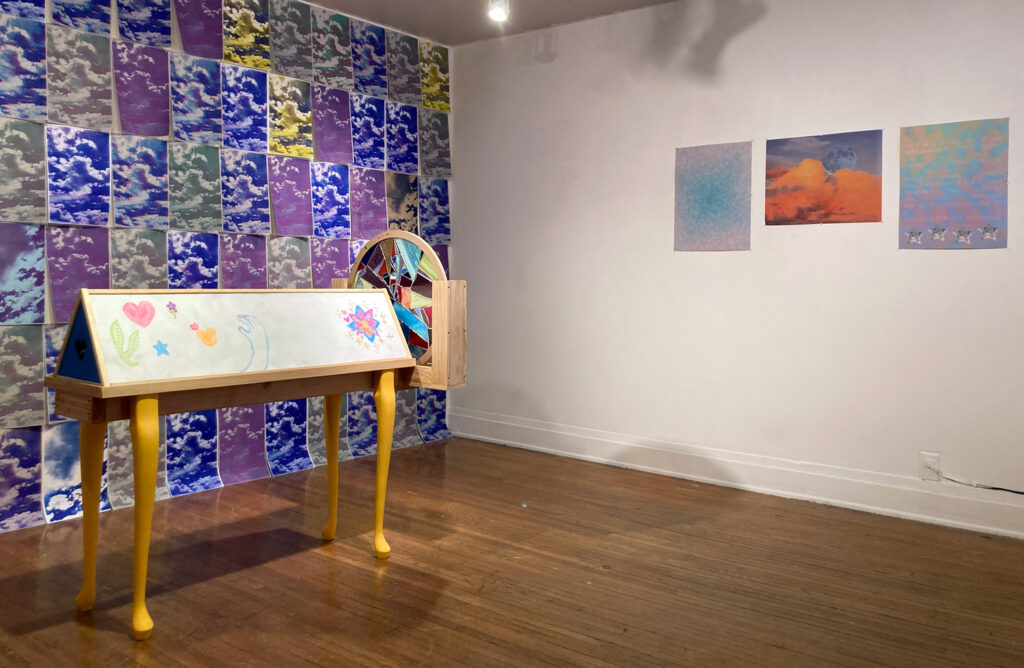
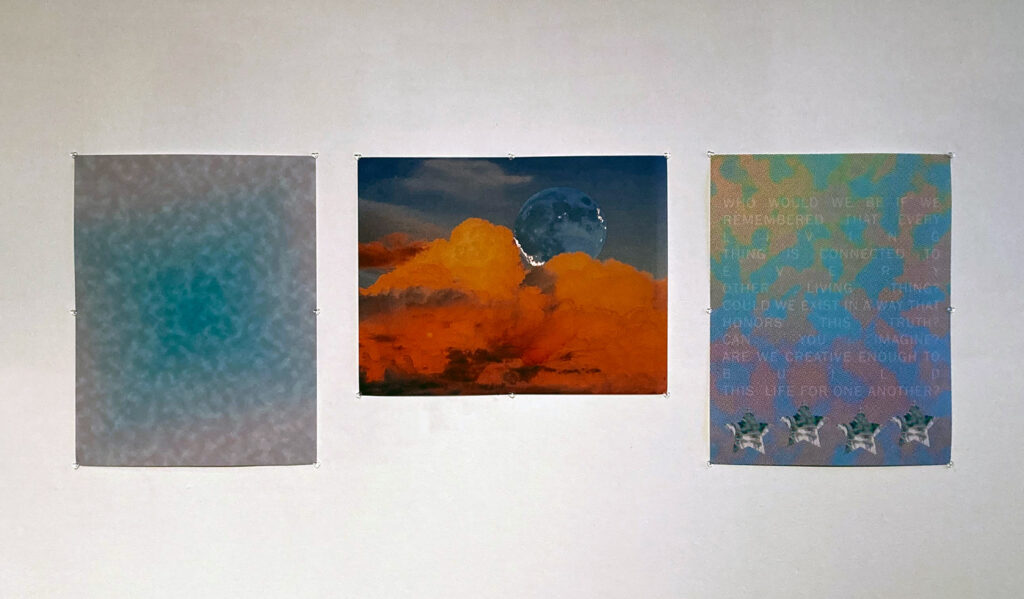
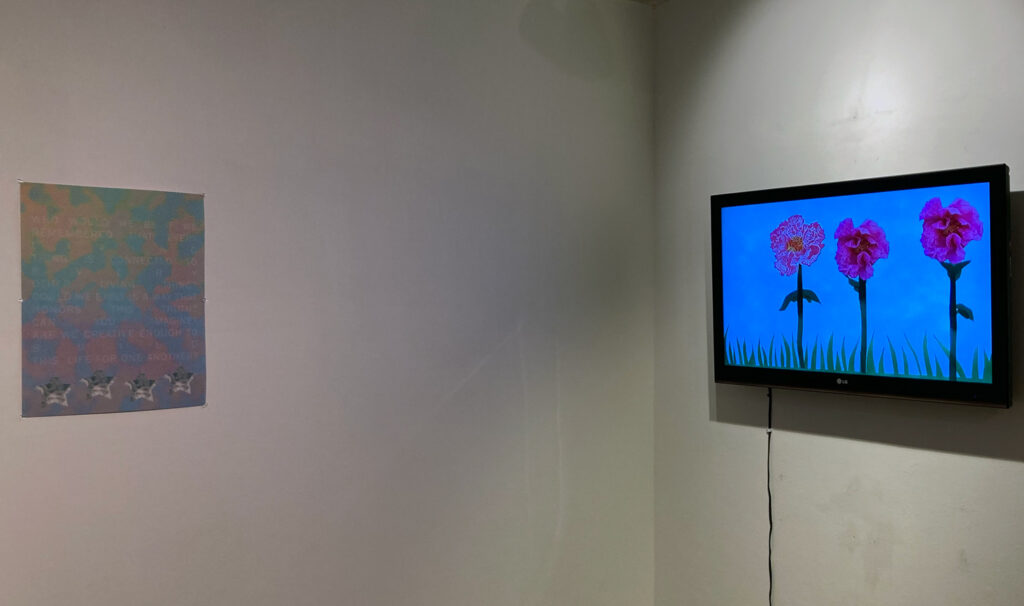
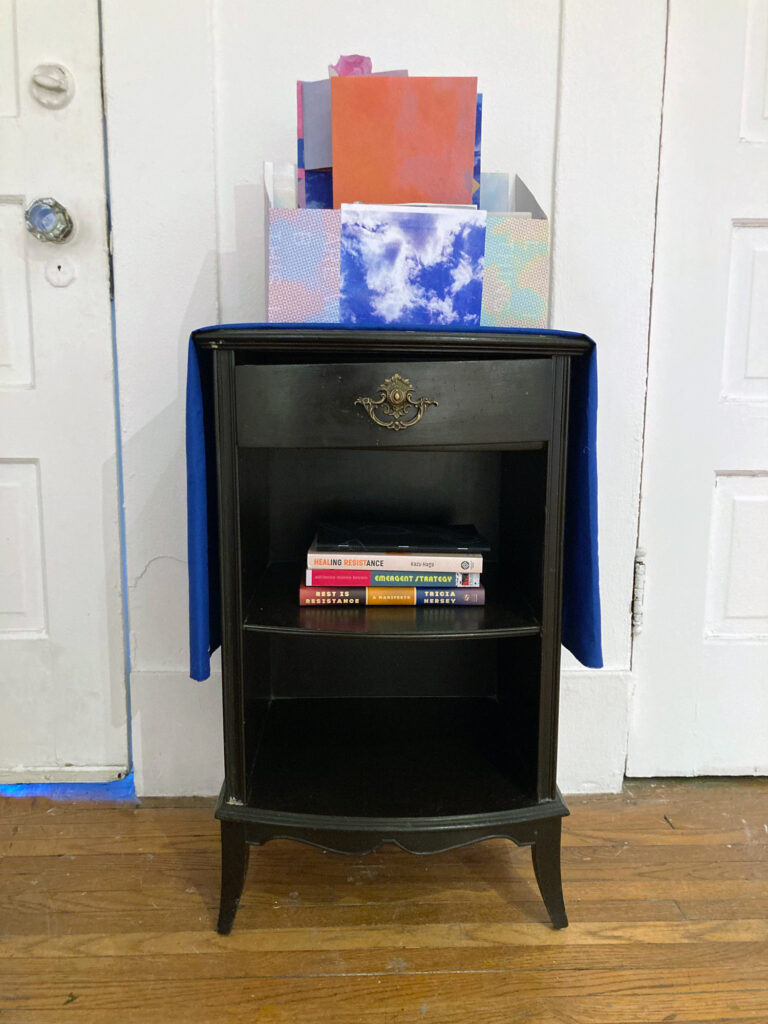
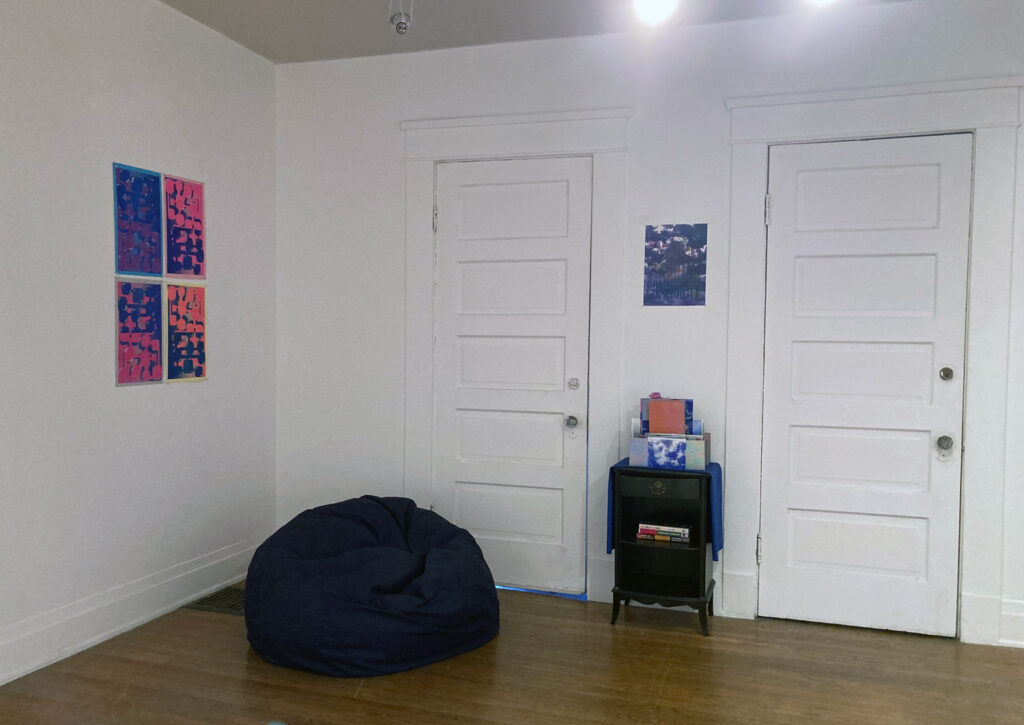
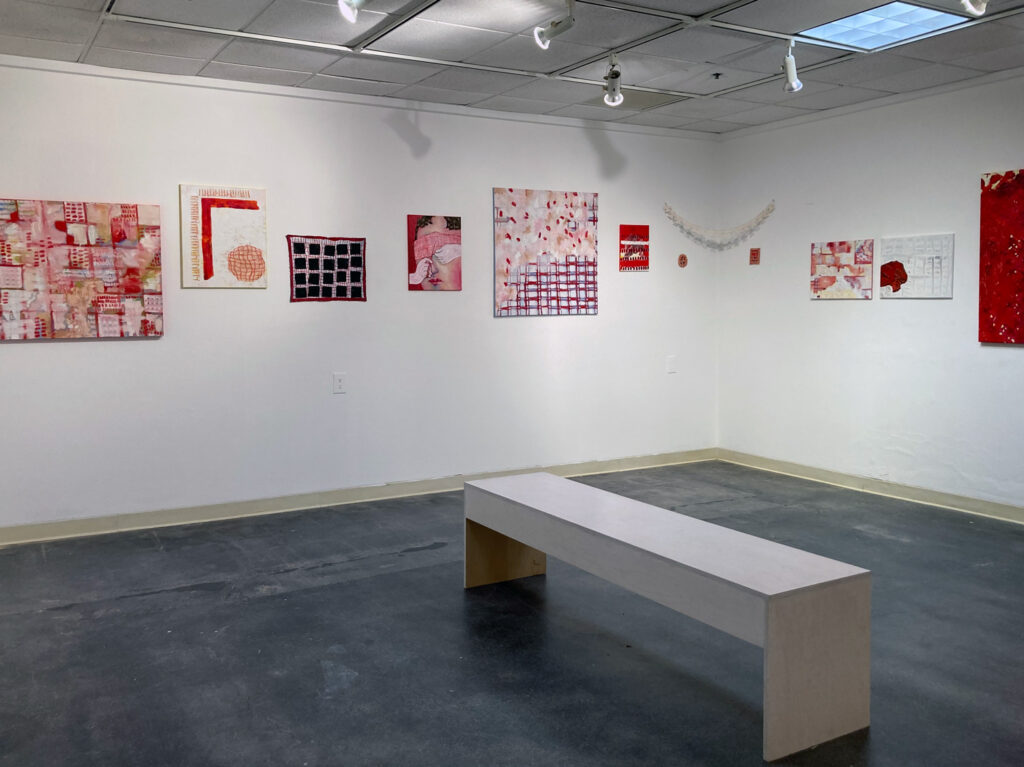
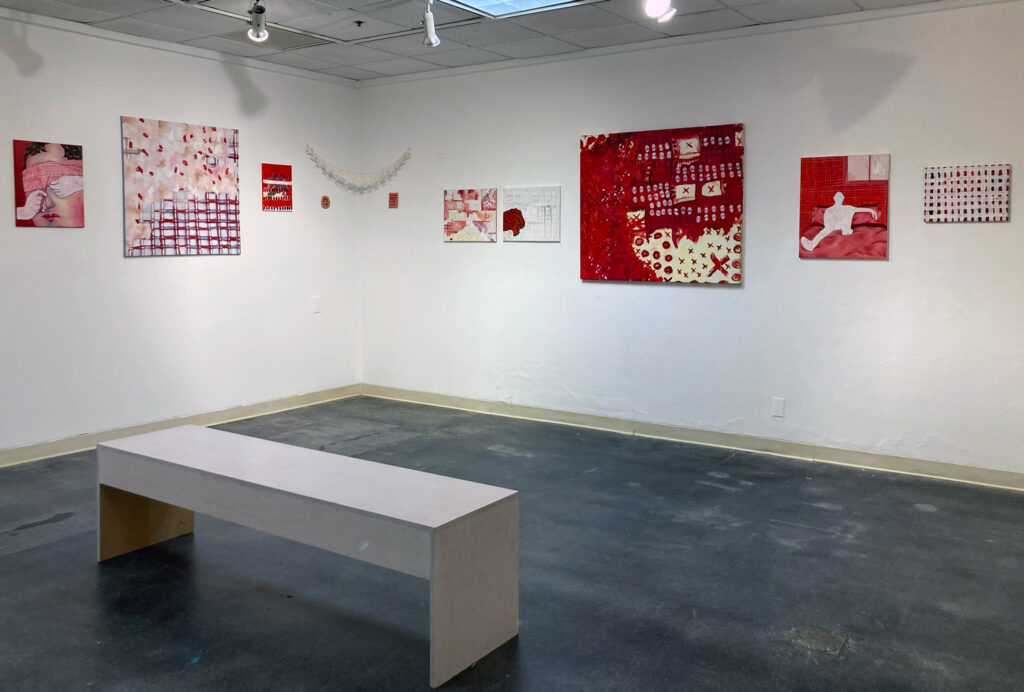
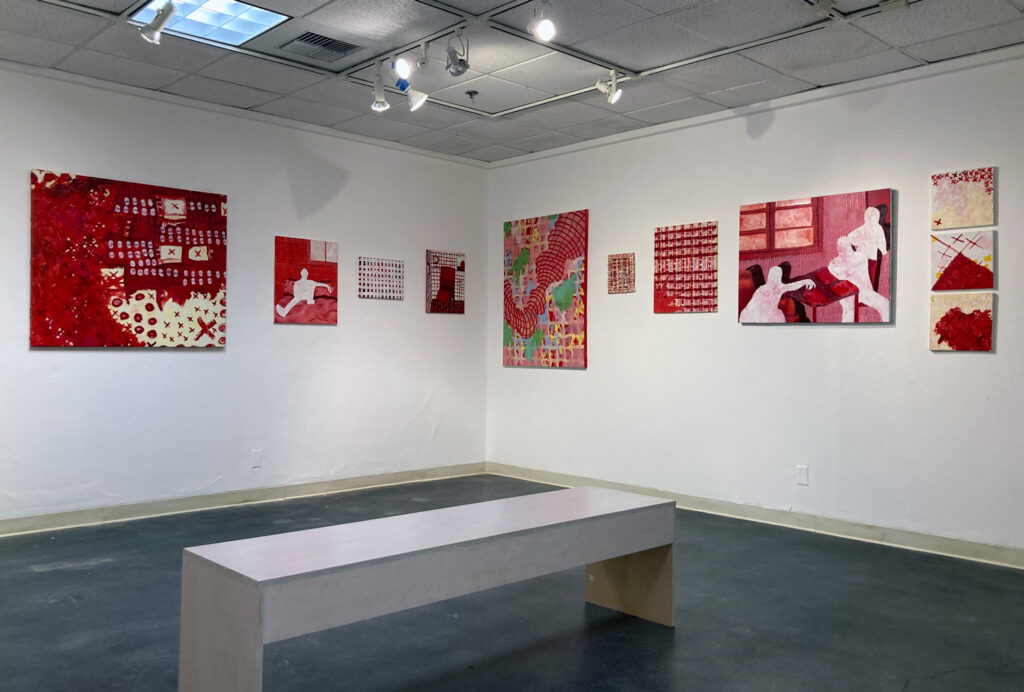
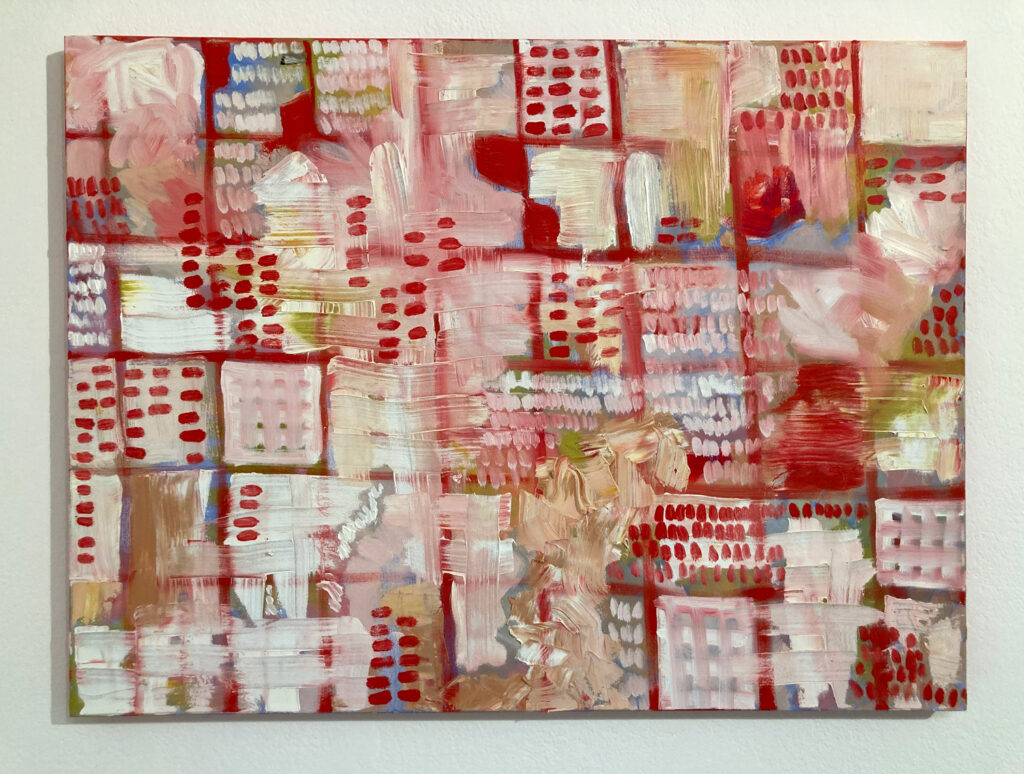
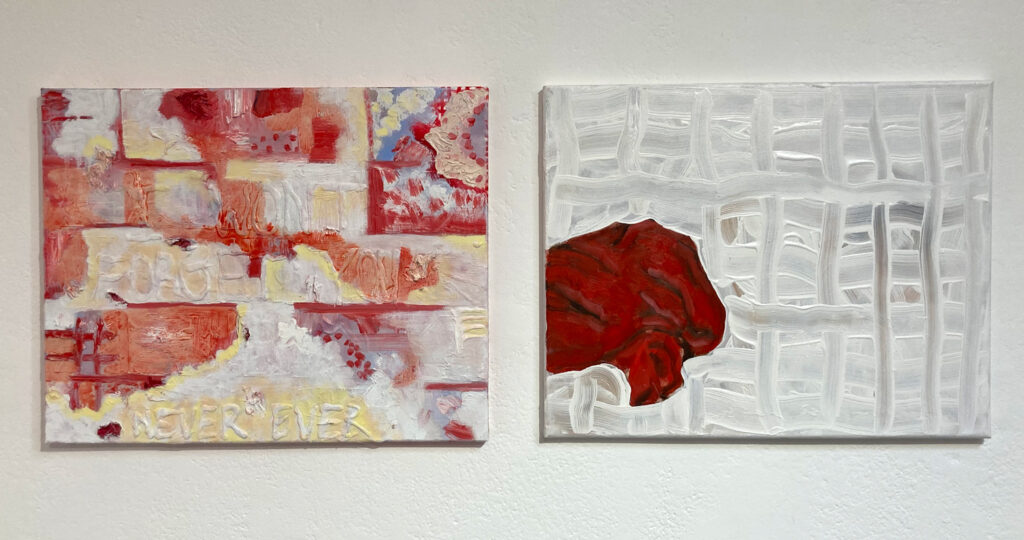
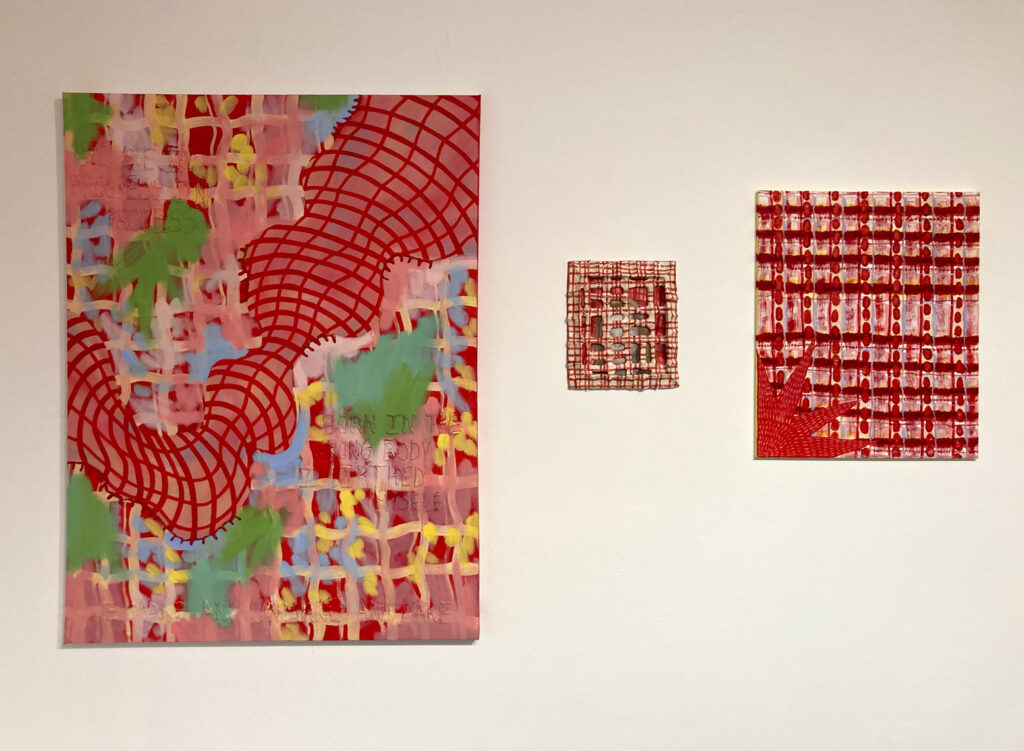
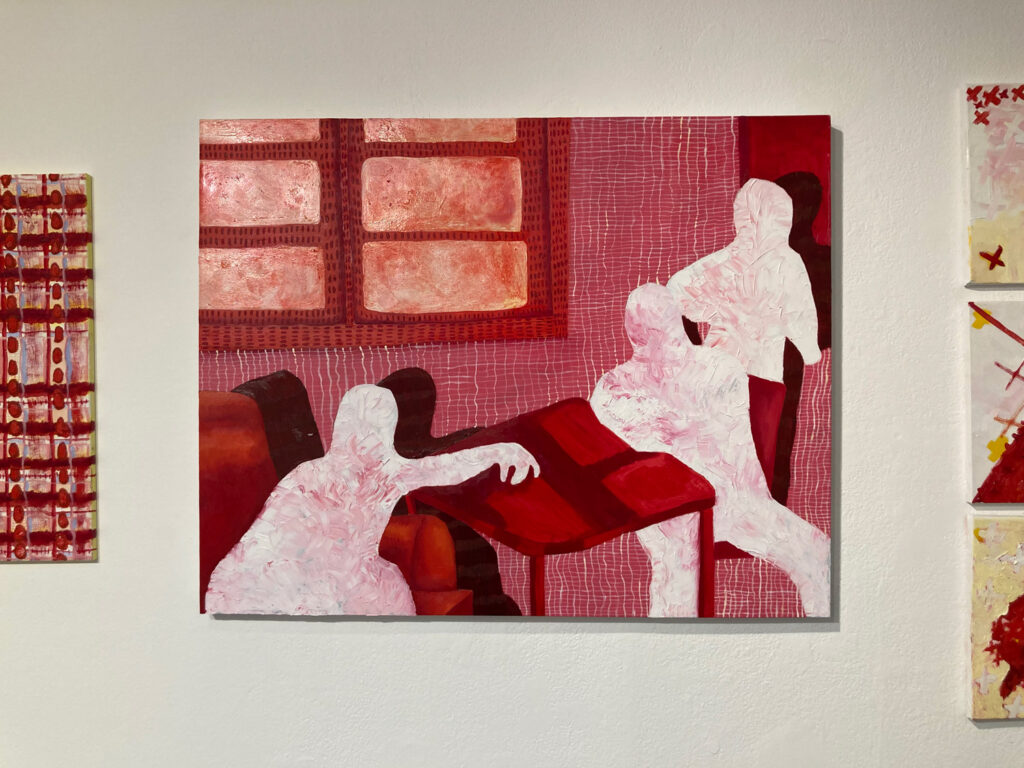
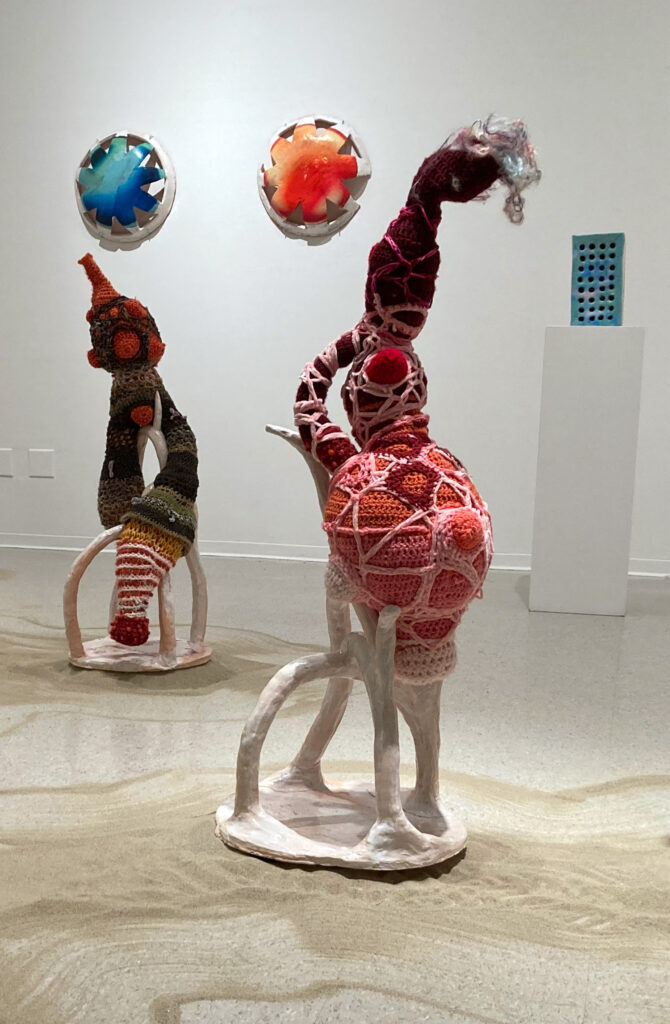
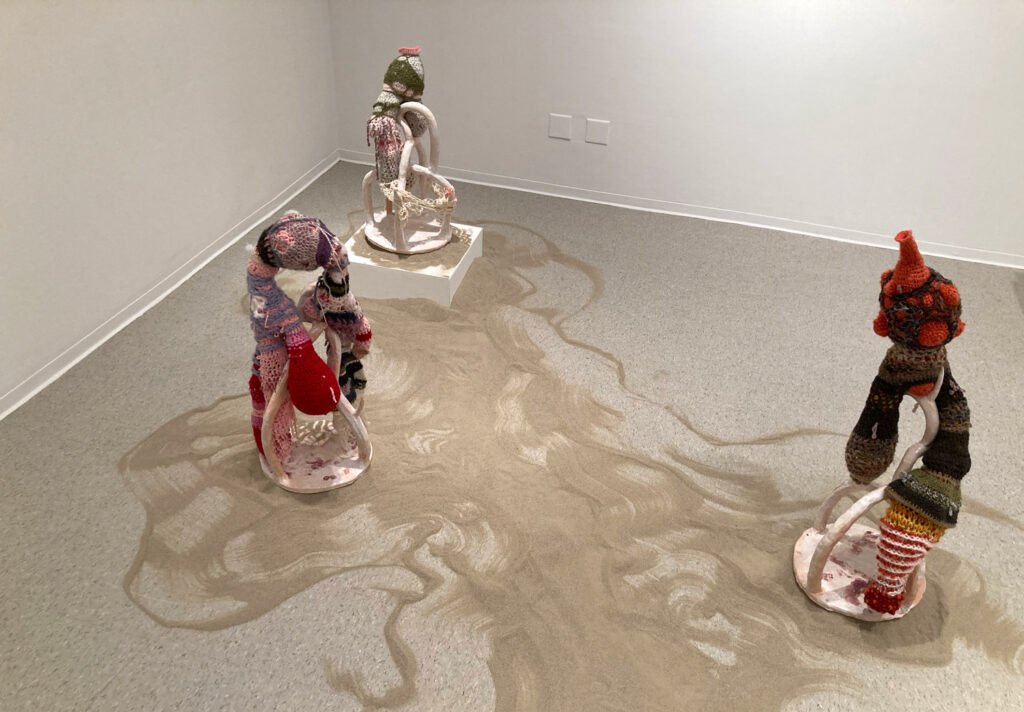
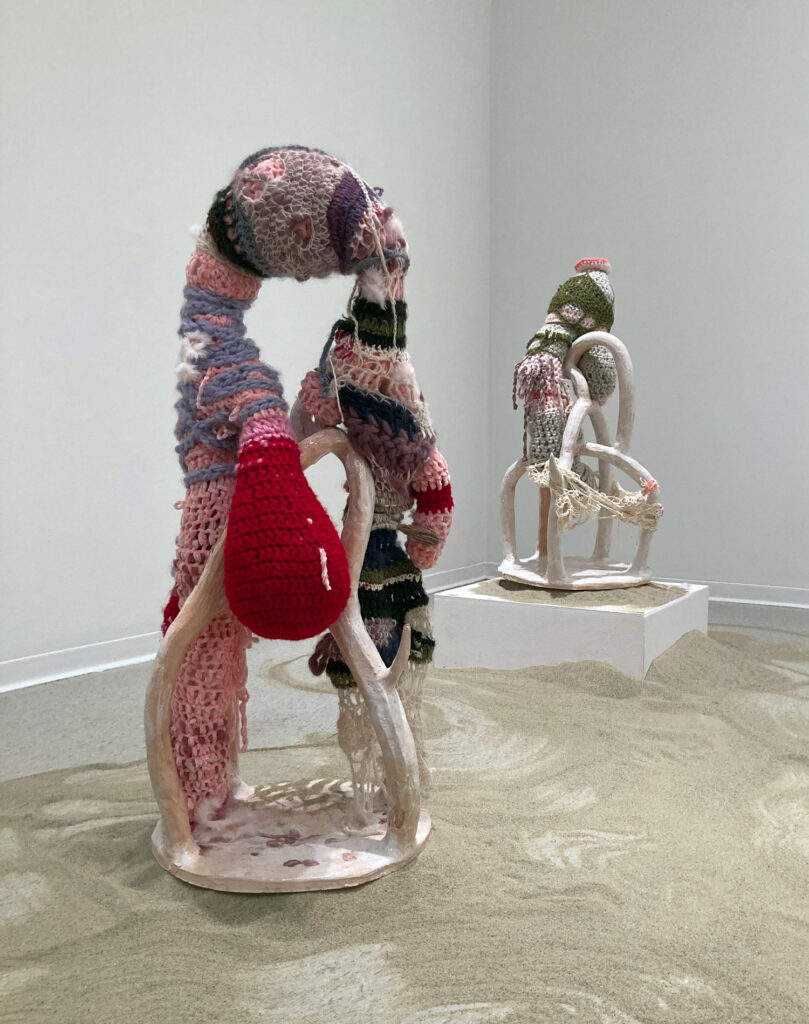
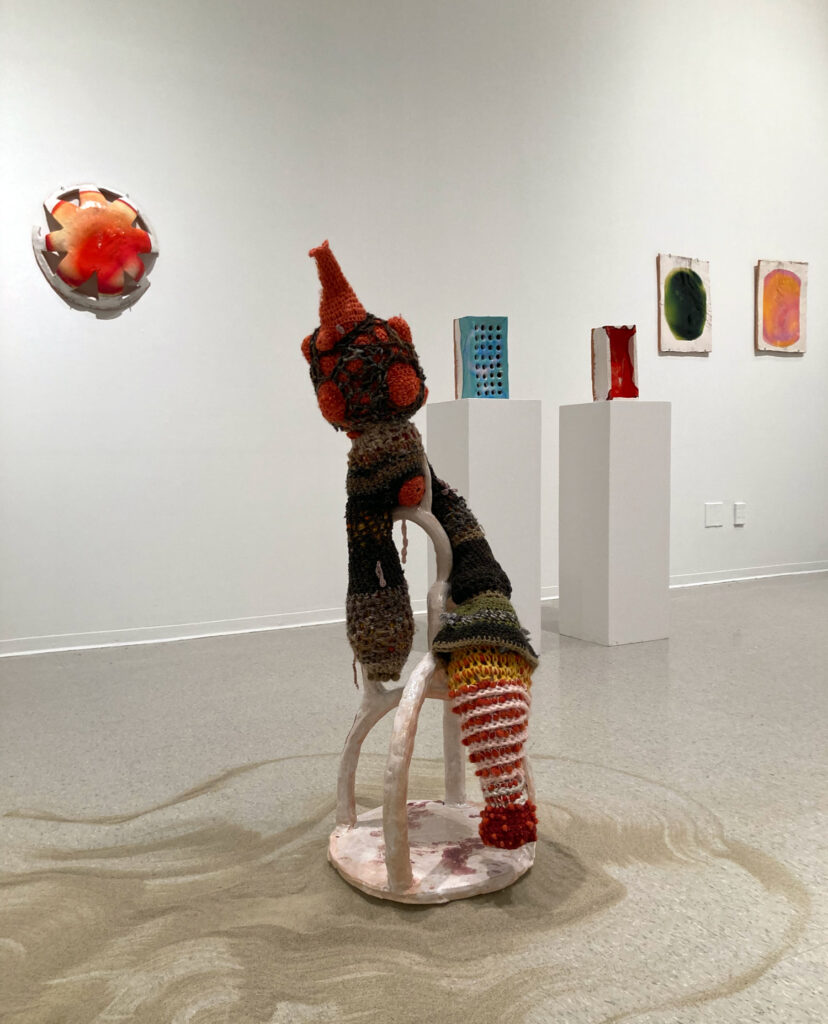
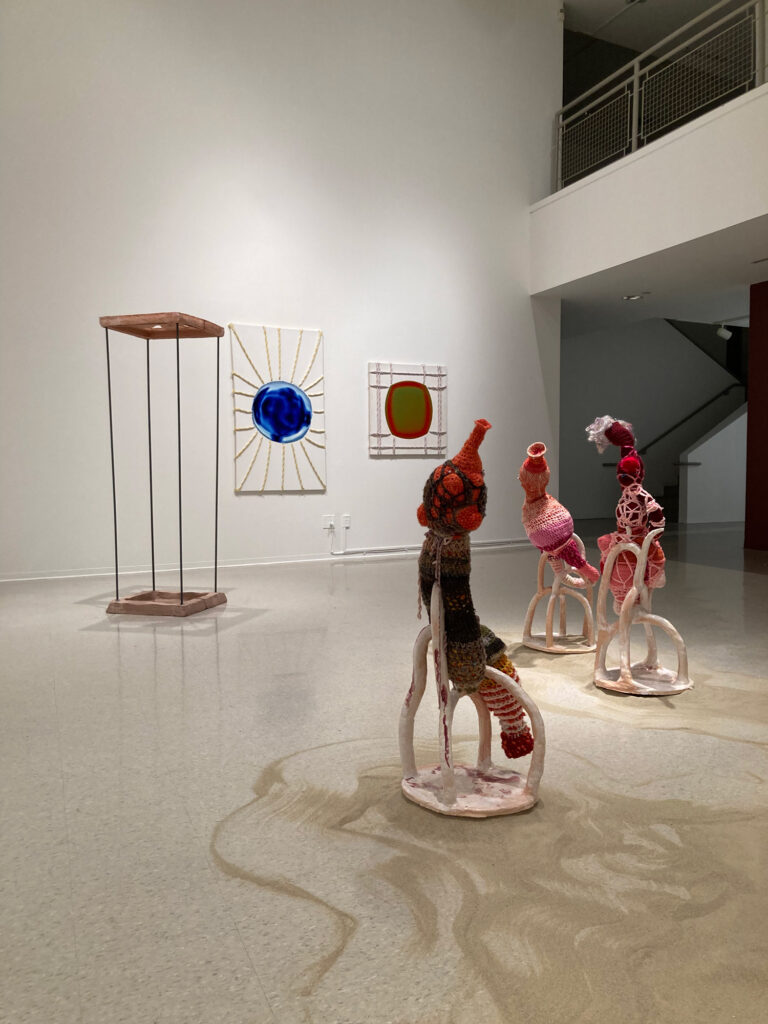
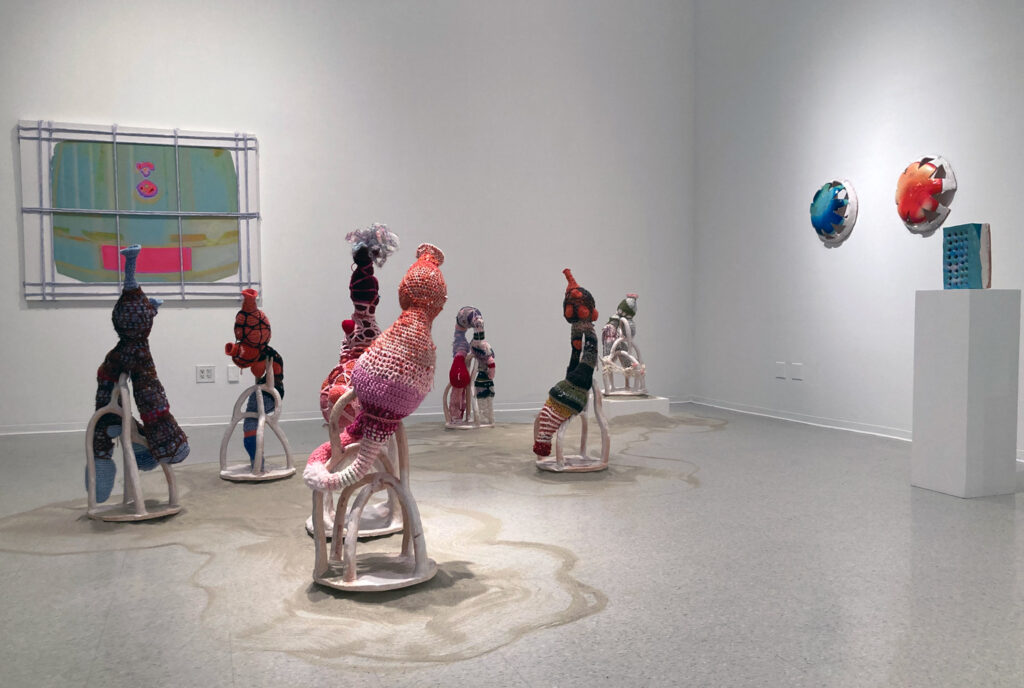
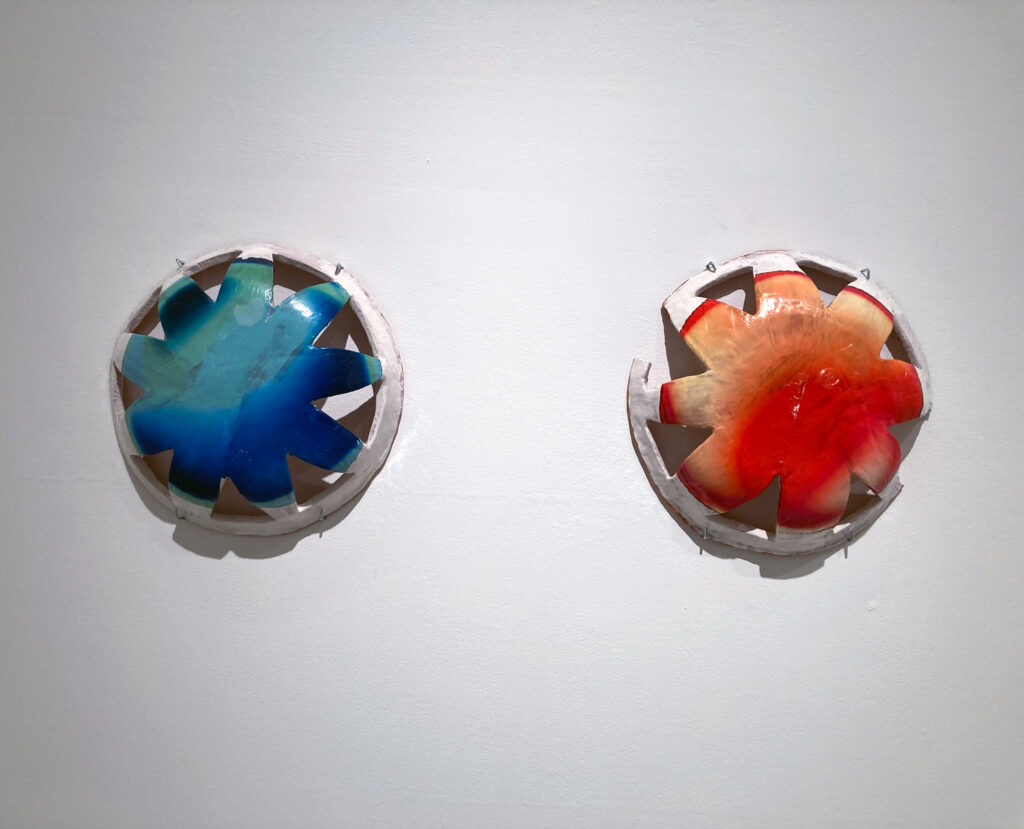
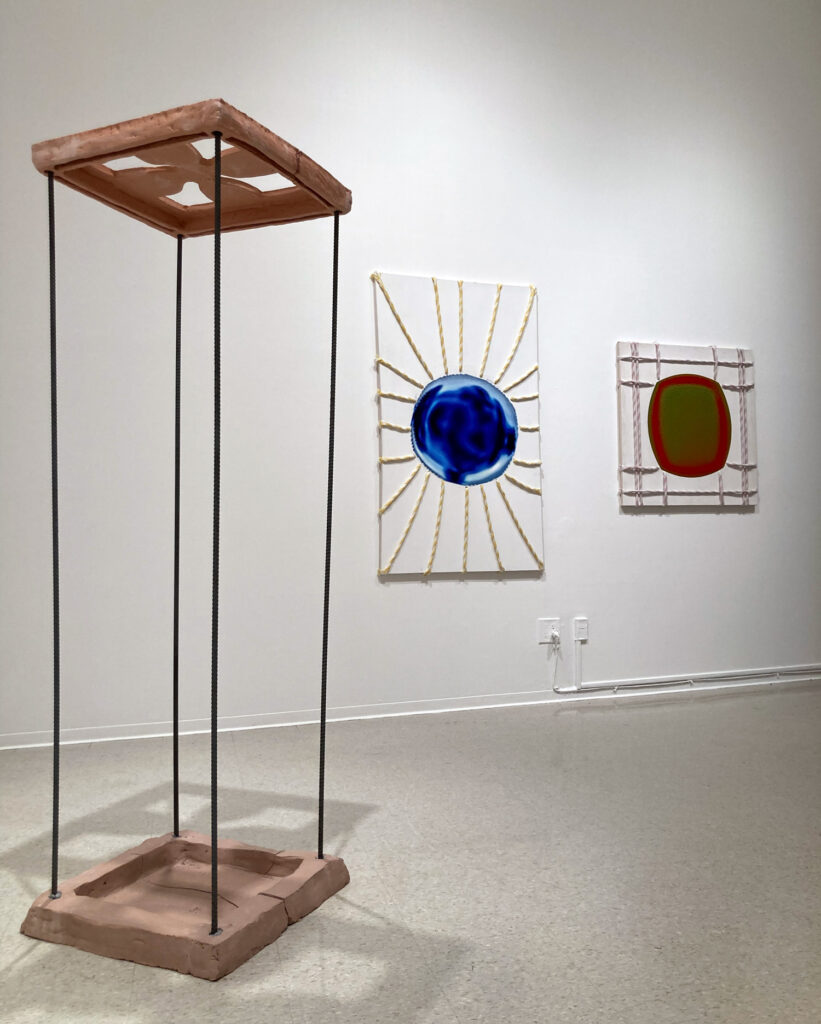
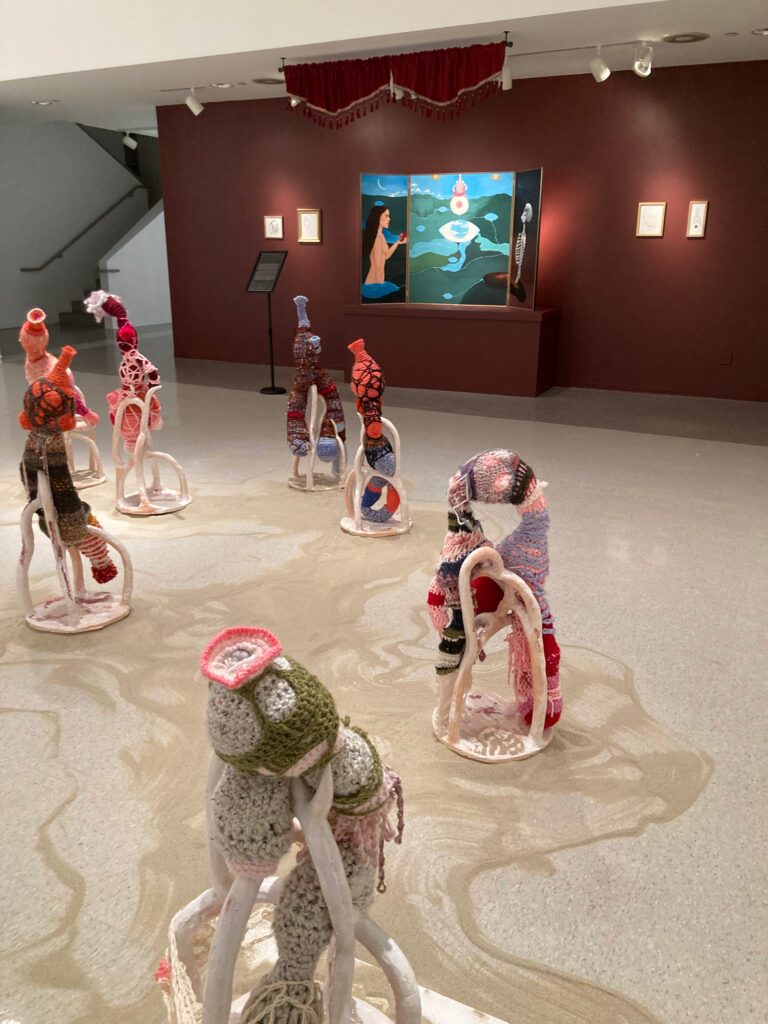
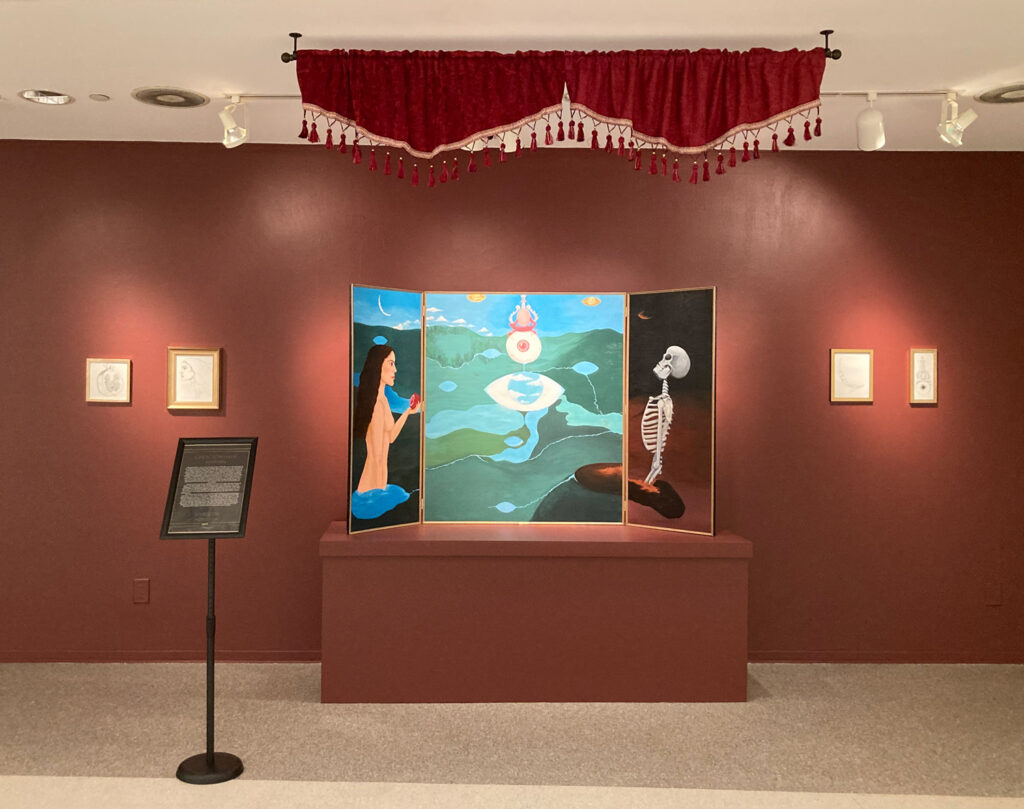
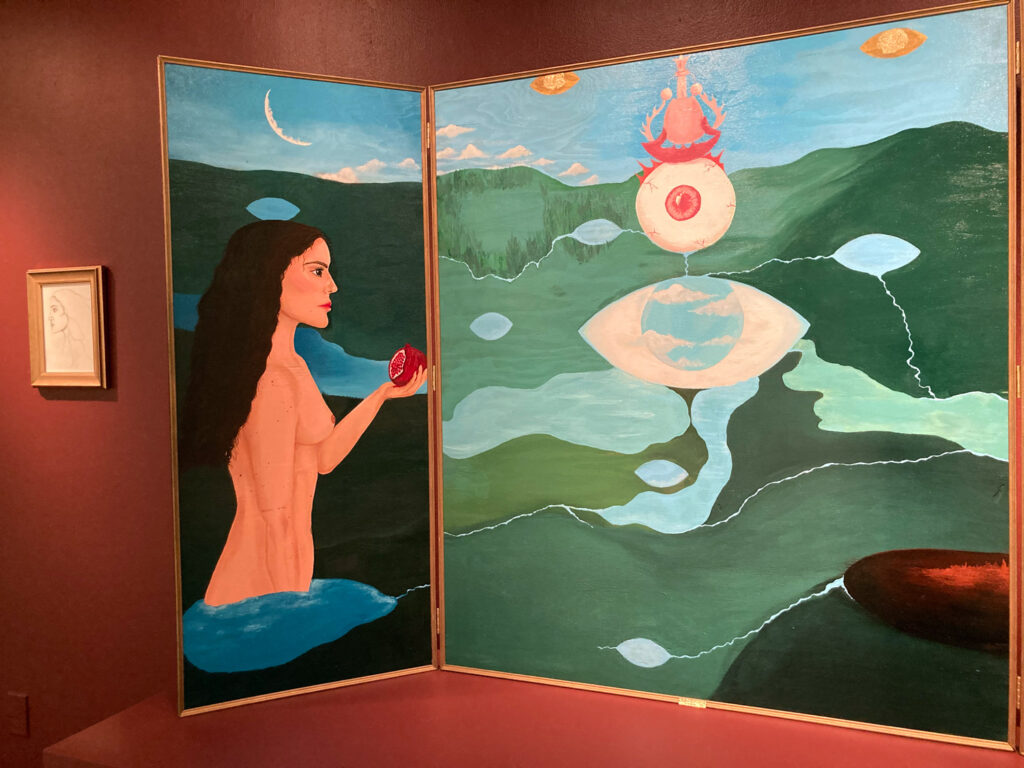
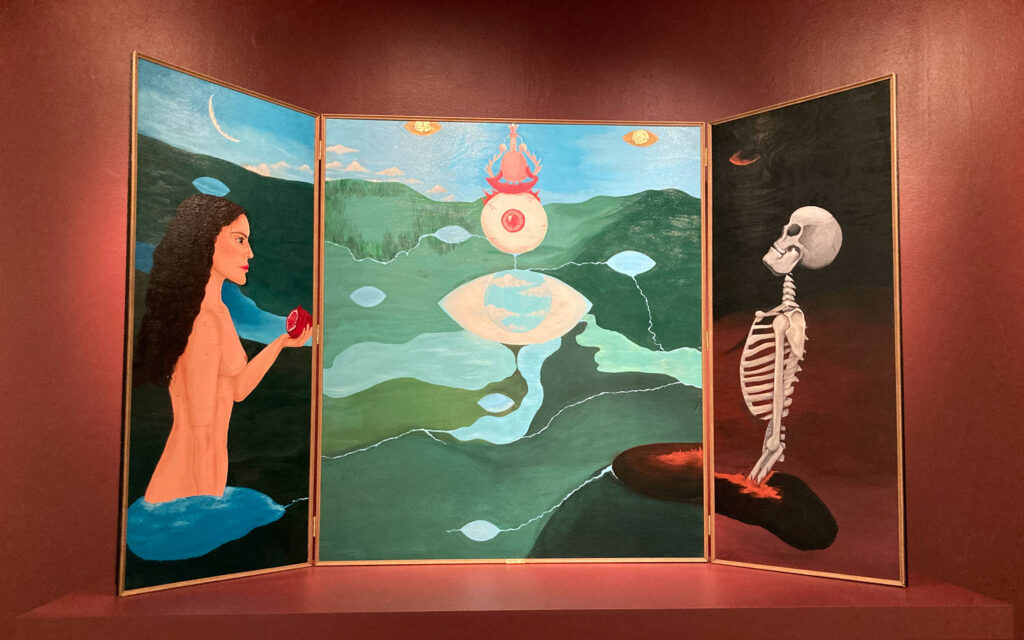
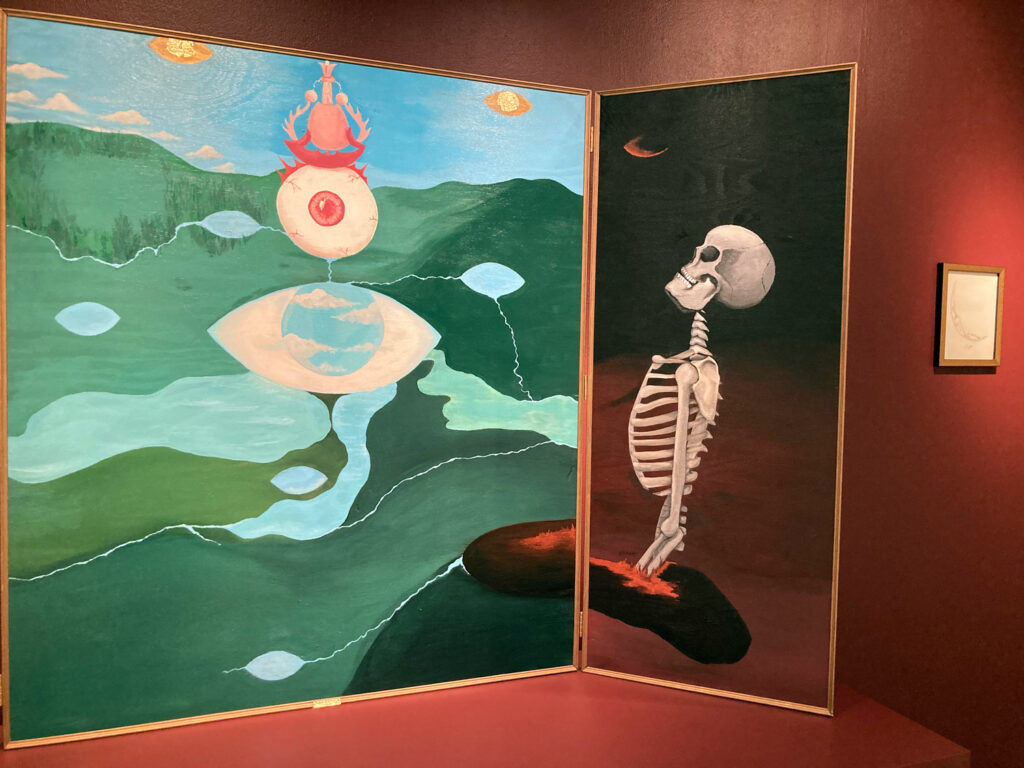
 WORLD IS WATCHING – MANIFESTO
WORLD IS WATCHING – MANIFESTO